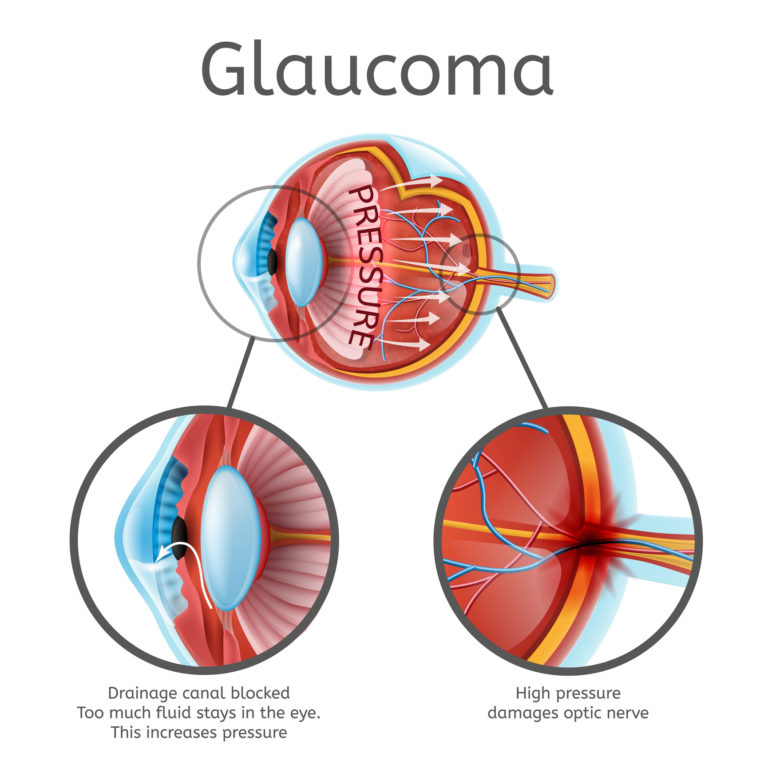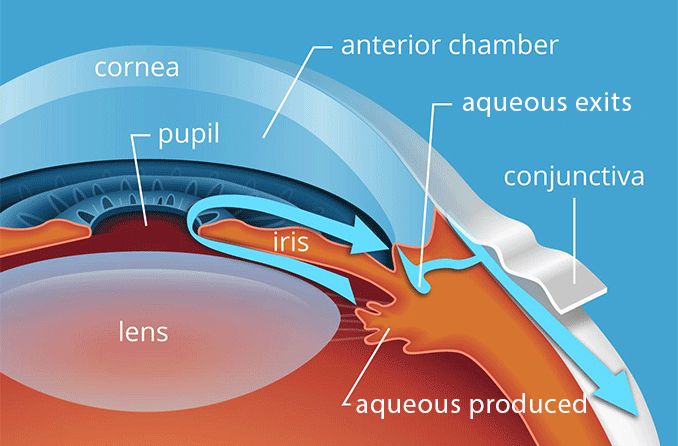What is glaucoma?
Glaucoma is a group of eye conditions that damage the optic nerve, which is responsible for sending visual information from the eye to the brain. It is the leading cause of irreversible blindness in the UK, with around 480,000 people affected by the condition.
The most common form of glaucoma is called primary open-angle glaucoma, which occurs when fluid builds up in the front part of the eye, causing the pressure inside the eye to increase. This pressure, also known as intraocular pressure, gradually damages the optic nerve, leading to vision loss.
It is important to note that not all people with glaucoma have elevated eye pressure. In some cases, the optic nerve can be damaged even with normal eye pressure. This is known as normal-tension glaucoma.
If left untreated or poorly managed, glaucoma can lead to permanent and irreversible vision loss. While glaucoma can affect one or both eyes, most people with the condition develop it in both eyes over time.
It is important to get regular eye exams to detect glaucoma early, as early diagnosis and treatment can help prevent or slow down vision loss. People with a family history of glaucoma, as well as those who are over the age of 40, have a higher risk of developing the condition and should be especially vigilant about getting regular eye exams.

What are the types of glaucoma?
Open-angle glaucoma
Open-angle glaucomais the most common type of glaucoma in the UK, affecting up to 90% of people with the condition. It occurs when there is resistance in the eye’s drainage canals, which appear to be open and functioning normally. Over a period of months or years, fluid can build up in the eye, leading to increased pressure on the optic nerve. This type of glaucoma often goes unnoticed because most people do not experience symptoms.
Closed-angle glaucoma
Closed-angle glaucoma, also known as narrow-angle or angle-closure glaucoma, is a rare type that typically develops suddenly (acute). It occurs when the angle between the iris and cornea is too narrow, often due to the pupil becoming too dilated too quickly. This blocks the drainage canals, preventing aqueous fluid from leaving the eye and causing an increase in eye pressure. Symptoms such as eye pain and headaches can be severe and require immediate medical attention.
Normal-tension glaucoma
Normal-tension glaucoma, also called normal-pressure or low-tension glaucoma, affects up to 1 in 3 people with optic nerve damage despite normal or only slightly elevated eye pressure. The cause of this type of glaucoma is uncertain, and it is more common among people of Asian descent or Asian Britons.
Congenital glaucoma
Congenital glaucoma is a type of glaucoma that occurs when the drainage canals in the eye do not form properly before birth. Symptoms may be present at birth or may become noticeable during childhood. Other names for this type of glaucoma include childhood, infantile, or paediatric glaucoma.
Secondary glaucoma
This type of glaucoma is caused by an underlying condition or medication, such as eye injury, diabetes, or long-term use of steroids.
What are the symptoms of glaucoma?
Glaucoma is a condition that can cause irreversible damage to the optic nerve, leading to vision loss. It’s important to note that some types of glaucoma may not have early warning symptoms, and changes to vision can happen gradually, making it easy to miss the symptoms.
Routine eye exams are essential in detecting glaucoma in its early stages, especially since many people with open-angle glaucoma don’t have noticeable symptoms. Closed-angle glaucoma tends to have more severe symptoms that come on suddenly.
Regardless of the type, you may experience symptoms such as:
- Eye pain or pressure
- Headaches
- Rainbow-coloured halos around lights
- Low vision, blurred vision, narrowed vision (tunnel vision), or blind spots
- Nausea and vomiting
- Red eyes
What causes glaucoma?

Aqueous humor is a fluid produced by your eyes that nourishes them. In a healthy eye, this fluid flows through the pupil to the front of your eye and drains through the canals located between your iris and cornea. However, with glaucoma, the resistance in the drainage canals increases, causing the fluid to build up and put pressure on your eye. This elevated eye pressure can eventually damage your optic nerve, leading to glaucoma.
It’s important to note that some people may develop glaucoma without any clear cause. Other factors that may increase the risk of developing glaucoma include age, family history, certain medical conditions, and certain medications. Regular eye exams are essential in detecting glaucoma in its early stages, especially since many people with open-angle glaucoma don’t have noticeable symptoms. If you have any concerns about your eye health or have a family history of glaucoma, it’s important to schedule an eye exam
Glaucoma Diagnosis in Tadley
Glaucoma can be difficult to detect in its early stages because it often has no noticeable symptoms. Therefore, regular eye exams are crucial to catching this disease and other eye problems. During an eye exam, Our expert optometrist will assess your optic health and vision loss.
To diagnose glaucoma, the optometrist at Optimum vision clinic may perform one or more of the following painless tests:
- Dilated eye exam to enlarge the pupils and inspect the optic nerve at the back of the eye.
- Gonioscopy to examine the angle where the cornea and iris meet.
- Optical coherence tomography (OCT) to identify changes in the optic nerve that could indicate glaucoma.
- Tonometry to measure the intraocular pressure (IOP) or eye pressure.
- Pachymetry to measure the thickness of the cornea.
- Slit-lamp exam to examine the inside of the eye using a special microscope called a slit lamp.
- Visual acuity test (eye charts) to determine any vision loss.
- Visual field test (perimetry) to assess any changes in peripheral vision (ability to see objects off to the side).
Treatment and management
Glaucoma is a chronic eye condition that can lead to irreversible vision loss if left untreated. Fortunately, there are several effective treatments available to manage glaucoma and prevent vision loss. Here are some of the common treatments used:
Eye Drops
Eye drops are typically the first line of treatment for glaucoma. They work by reducing the amount of fluid in the eye or increasing its drainage to lower eye pressure. There are several different types of eye drops available, and your ophthalmologist will prescribe the most appropriate one for you.
Laser Treatment
Laser treatment is another common way to treat glaucoma. This involves using a high-energy laser beam to create small openings in the eye’s drainage system, allowing fluid to drain more easily and reduce eye pressure. Laser treatment is often used when eye drops are not effective enough or as a preventative measure in people with high-risk glaucoma.
Surgery
If eye drops and laser treatment are not effective enough, surgery may be recommended. There are several surgical options available, including trabeculectomy, which involves creating a small hole in the eye to drain fluid, and minimally invasive glaucoma surgery (MIGS), which uses smaller incisions and less invasive techniques to reduce eye pressure.
Monitoring
Regular monitoring is essential to manage glaucoma effectively and prevent vision loss. At optimum vision clinic you can schedule regular appointments to monitor your eye pressure, assess any changes in your vision, and receive advise on any treatment plan.
Tips for managing your condition
If you have been diagnosed with glaucoma, it can be overwhelming to know how to manage your condition. Here are some tips for living with glaucoma:
Take your medications as prescribed
If your ophthalmologist has prescribed eye drops or other medications to manage your glaucoma, it is important to take them as prescribed. Skipping doses or not using them correctly can lead to increased eye pressure and vision loss.
Follow a healthy lifestyle
Maintaining a healthy lifestyle can help manage your glaucoma and reduce your risk of developing other health conditions. This includes eating a healthy diet, exercising regularly, not smoking, and managing any other health conditions you may have.
Protect your eyes
Protecting your eyes from injury and infection is important when you have glaucoma. Wear protective eyewear when playing sports or doing activities that could cause an eye injury, and practise good hygiene to prevent eye infections.
Attend regular appointments
Regular appointments are essential to managing your glaucoma effectively. Attend all scheduled appointments and inform us or your doctor of any changes in your vision or symptoms.
By following these tips and working closely with your glaucoma team, you can manage your glaucoma effectively and prevent vision loss.


